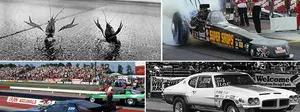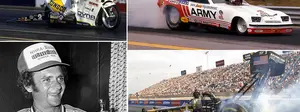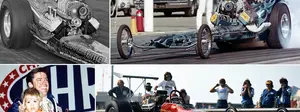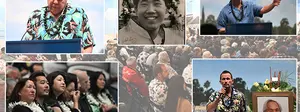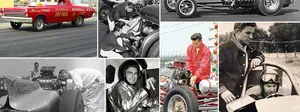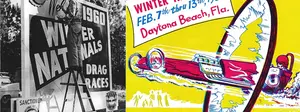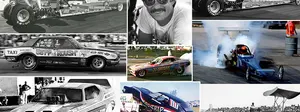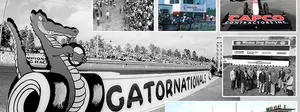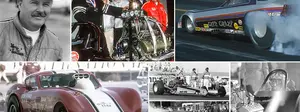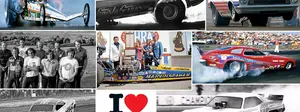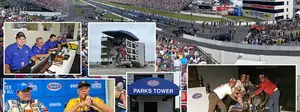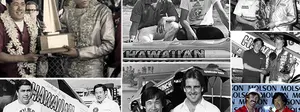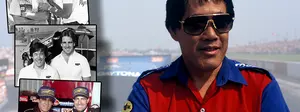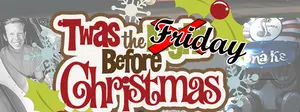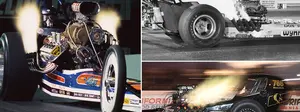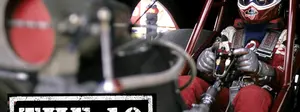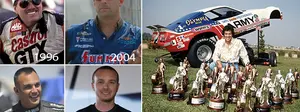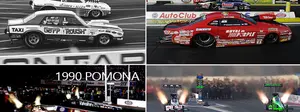The Time Machine: 1988
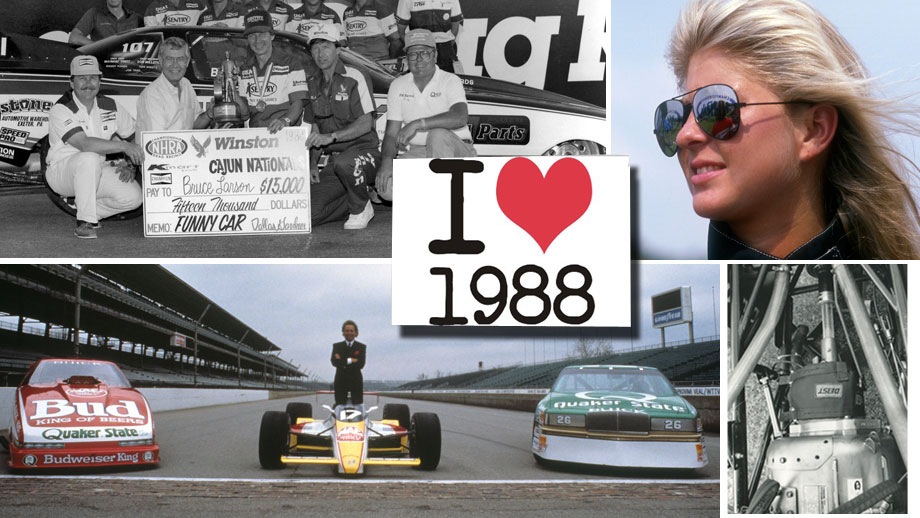
 The old hippie saying “Never trust anybody over 30” was attributed in 1964 to environmental activist Jack Weinberg (who today is 78) in an article about the Free Speech Movement that ran in the San Francisco Chronicle. I bring up this bit of trivia not because me, you, and pretty much the large demographic of column readership are already north of 30 but because when I chanced recently to look back 30 years to 1988, it was chock full of interesting drag racing headlines, more probably than any year should rightfully have.
The old hippie saying “Never trust anybody over 30” was attributed in 1964 to environmental activist Jack Weinberg (who today is 78) in an article about the Free Speech Movement that ran in the San Francisco Chronicle. I bring up this bit of trivia not because me, you, and pretty much the large demographic of column readership are already north of 30 but because when I chanced recently to look back 30 years to 1988, it was chock full of interesting drag racing headlines, more probably than any year should rightfully have.
Even if you weren’t a drag racing fan yet, you remember 1988, right? A gallon of gas cost 91 cents. You could buy a new Ford Taurus for under $10,000. You could go to the movies and watch Bruce Willis go all yippee-ki-yay on Hans and the bad guys in the original Die Hard for just $3.50. Back then, a bad-ass computer had 512K of RAM and a 30-megabyte hard drive. (Today your average cellphone is thousands of times more powerful and holds thousands of times more storage than that and fits in your pocket.) Man, those were the days, huh?
Anyway, back to drag racing. Step into my hot-rodded time machine and venture back three decades to relive some of the big stories that will make you smile and wonder, “Was it really that long ago?”

NHRA added four races in 1988, in Sonoma, Seattle, Memphis and Houston, named, respectively, the California Nationals, the Seafair Nationals, the Mid-South Nationals, and the SuperNationals. The creation of the Sonoma and Seattle events, however, did not mark the first year of the now-famous Western Swing because Bandimere Speedway, home of the Mile-High Nationals, was closed that year for a massive renovation that included the new VIP tower. The first Western Swing followed in 1989. And, of course, Seattle was not really a new event (NHRA had raced there in the fall from 1975-80), just a return, as was the SuperNationals name, last used in 1974. NHRA actually held a contest with fans to name the Memphis event, and 38 people among the hundreds who entered submitted Mid-South Nationals as their pick. Ground was broken in May 6 at Heartland Park Topeka, which would join the schedule the following year.
There were a lot of NHRA firsts that year. Today we take the progressive timing system, which doles out incremental times down the length of the race course, for granted, but the 1988 Winternationals marked the debut of 330- and 660-foot timing lights, giving racers additional information on their time slips. (1,000-foot times were added in 1989.) The 1988 season also was the first for the Top Eliminator Club, a premium seating and hospitality compound for race fans and sponsors, which would debut at the U.S. Nationals. In March, NHRA and Winston proudly announced the series' first million-dollar points fund.
 The year brought in a bumper crop of nitro rookies including former Comp racer Lori Johns, former Alcohol Dragster pilots Rudy Toepke (tuned by then unknown John Medlen) and Dennis Forcelle, injected Funny Car graduate Richard Hartman (now Tim Wilkerson's right-hand man), former drag boat pilot Art Hendey (who partnered with Chuck Worsham on the Tinker Toy Funny Car), and longtime Alcohol Funny Car racer Frank Cook (in the Gunite Express dragster). Frank Hawley also was sort of a rookie as the former Funny Car world champ ended a three-year driving hiatus (while he launched his drag racing school) coming back in midseason to drive Larry Minor’s second Miller High Life dragster, his first stint in a rear-engined Top Fuel car and scoring a runner-up at the Fallnationals.
The year brought in a bumper crop of nitro rookies including former Comp racer Lori Johns, former Alcohol Dragster pilots Rudy Toepke (tuned by then unknown John Medlen) and Dennis Forcelle, injected Funny Car graduate Richard Hartman (now Tim Wilkerson's right-hand man), former drag boat pilot Art Hendey (who partnered with Chuck Worsham on the Tinker Toy Funny Car), and longtime Alcohol Funny Car racer Frank Cook (in the Gunite Express dragster). Frank Hawley also was sort of a rookie as the former Funny Car world champ ended a three-year driving hiatus (while he launched his drag racing school) coming back in midseason to drive Larry Minor’s second Miller High Life dragster, his first stint in a rear-engined Top Fuel car and scoring a runner-up at the Fallnationals.

The 1988 season also marked the first year of Eddie Hill’s long and fruitful sponsorship with Super Shops and Pennzoil that created his famous bright-yellow “nuclear banana” dragster. It was a pretty good year for “the Texan,” who made the first four-second Top Fuel run, 4.990, in April at an IHRA event at Texas Motorplex (on April 9, to be exact, or, serendipitously, 4/9) and also won four events: the Gatornationals, Southern Nationals, SuperNationals, and Fallnationals. It was at those SuperNationals in October where Gene Snow made the first official NHRA four-second run and Hill shattered he record books later in the event with a 4.930 in what was an especially memorable weekend.
 The year will be remembered by nitro racers as the first in the new era of direct drive/high gear-only. Top Fuelers racers hadn’t run without transmissions for decades until Snow, in collaboration with AFT, debuted a direct-drive setup in mid-year. The ever-experimental Jim Head beat him to the punch with a similar unit in Funny Car. “Multi-stage clutches” had been developed in the previous two years, allowing progressive implementation of plateload through a moveable throwout bearing that allowed the crew chief to determine when extra clutch would be applied. Extra fingers were added to the pressure plate (12, in Snow’s case, over the previous norm of six to nine) to work the magic. By year’s end, most of the top cars had converted to the new setup and transmissions were a thing of the past (and remain so).
The year will be remembered by nitro racers as the first in the new era of direct drive/high gear-only. Top Fuelers racers hadn’t run without transmissions for decades until Snow, in collaboration with AFT, debuted a direct-drive setup in mid-year. The ever-experimental Jim Head beat him to the punch with a similar unit in Funny Car. “Multi-stage clutches” had been developed in the previous two years, allowing progressive implementation of plateload through a moveable throwout bearing that allowed the crew chief to determine when extra clutch would be applied. Extra fingers were added to the pressure plate (12, in Snow’s case, over the previous norm of six to nine) to work the magic. By year’s end, most of the top cars had converted to the new setup and transmissions were a thing of the past (and remain so).

More nitro firsts from 1988: NHRA first mandated the use of supercharger burst panels in 1988. Set to release within 40 milliseconds of a pressure spike of about 195 psi, the units remain mandatory to this day. Frank Bradley began a trend with his Dave Uyehara-built 300-inch-wheelbase Top Fueler, which set the national speed record at 286.71 mph at the Gatornationals. Previously, the longest Top Fuelers were in the 270-280 range. Today 300 inches remains the maximum limit for dragsters. Dual-element rear wings on Top Fuelers also became the rage in Top Fuel.
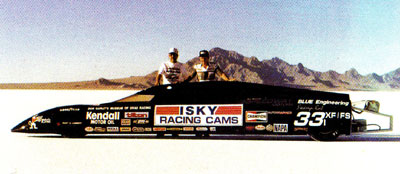 In February, Don Garlits, idle since his August 1987 blowover in Spokane, announced plans for a land-speed record attempt in an Ardun-powered streamliner, dubbed Swamp Rat 33. He later set the X/Streamliner record at 219.947 mph. Coincidentally, maverick fuel pilot “King Richard” Tharp ended a five-year retirement to drive Raymond Beadle's Blue Max Funny Car at the Gatornationals.
In February, Don Garlits, idle since his August 1987 blowover in Spokane, announced plans for a land-speed record attempt in an Ardun-powered streamliner, dubbed Swamp Rat 33. He later set the X/Streamliner record at 219.947 mph. Coincidentally, maverick fuel pilot “King Richard” Tharp ended a five-year retirement to drive Raymond Beadle's Blue Max Funny Car at the Gatornationals.

Speaking of kings, Kenny Bernstein was simultaneously fielding NASCAR and IndyCar entries in addition to his Buick Reatta Budweiser King Funny Car (the successor to the outlawed “Batmobile” LeSabre of 1987) and had all three in action over the Memorial Day weekend. Jim Crawford and Johnny Rutherford finished sixth and 22nd, respectively, at the Indy 500 while Ricky Rudd finished seventh in the NASCAR World 600 in Charlotte. Bernstein, meanwhile, was runner-up at the Cajun Nationals to …

… Bruce Larson, whose USA-1 Funny Cars had been a staple of the class for its entire 22-year existence. Larson finally won his first national event, scoring at the Cajun Nationals, where he beat Bernstein in the final. It was Larson’s only win of the year but he’d win six times in 1989 en route to the world championship. Larson actually made it to the final of the next 1988 race, the Springnationals in Columbus, but lost there to John Force, who collected career win No. 2 –- nearly a year after claiming No. 1, which came after a decade of frustration. Also at that event, current nitro Funny Car pilot Tommy Johnson Jr. won for the first time in his career, in Alcohol Funny Car.

Much like 30 years later (hint: 2018), first-time winners were a thing in Pro Stock as Tony Christian (Memphis), Morris Johnson Jr. (Montreal), and Harry Scribner (Sonoma) won for the first times in their Pro careers. Also new that season, Darrell Alderman debuted Dodge's first factory Pro Stock effort in more than 10 years at the Gatornationals, but failed to qualify. He’d win his first of 28 exactly a year later at the Gatornationals and would win the first of three championships in 1990.

The U.S. Nationals was quite a show. Snow’s direct-drive dragster gave a hint of things to come a month later in when he ran 5.006 in the semifinals, but lost a chance for the first four when his throttle cable snapped in the final against tire-smoking Joe Amato. Ed McCulloch won his record fourth Indy Funny Car title while Bob Glidden won both the race and the Mr. Gasket Pro Stock Challenge; Mark Oswald won the Big Bud Shootout.

One of the biggest stories was in Alcohol Dragster, where Gary Southern drove Dale Smart’s car to a dominant victory using Norm Drazy’s new PSI screw-type blower, which became the killer component for the next several years. The piece had debuted earlier that season, at the divisional race in Sonoma, both on Smart’s car and on that of the late Mark Niver, but no one knew it would revolutionize the class like it did. I still remember seeing Southern going through the lights at 227.96 mph (top speed of the meet) with the 1960s-style V for Victory salute thrust out of the cockpit while edging John Speelman in the final.
And speaking of speeds, even then, NHRA was concerned about escalating speeds, especially in the nitro classes, and announced that in 1989 it would shorten its speed traps to just the 66 feet before the finish line. Previously, the speed trap spanned 66 feet on either side of the win stripe, encouraging some drivers to drive it “out the back door" past the finish line to try to earn top speed bonus points. NHRA simultaneously announced that it would no longer give points for top speed of the meet (though the low e.t. points remained for many more years).
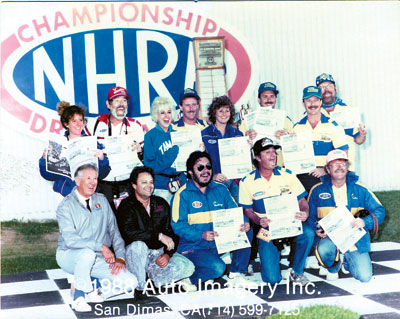 It was a year of firsts and lasts at Indy. That was the year we debuted the Daily Dragster newspaper that was handed out to fans each morning (remember this was before the internet). It was also the last Indy at which a win was worth 1,500 points, as opposed to the usual 1,000, until NHRA revived the bonus points in 2015.
It was a year of firsts and lasts at Indy. That was the year we debuted the Daily Dragster newspaper that was handed out to fans each morning (remember this was before the internet). It was also the last Indy at which a win was worth 1,500 points, as opposed to the usual 1,000, until NHRA revived the bonus points in 2015.
Speaking of other ND firsts, it was in late 1988 (the fourth from last issue, to be exact) that National Dragster arrived in your mailbox stapled together. Since its inception in March 1960, it had been loose-leaf and prone to falling apart in transit. That all ended in late 1988. It was another 15-plus years, beginning with the first issue of 2004, that National Dragster evolved into its current “perfect bound” (no staples) format.
The year was bookended by a couple of major losses. In March, pioneer drag racer Mickey Thompson and his wife, Trudy, were murdered in California. In December, Herb Parks, Don Garlits' longtime crew chief, was killed Dec. 3 in a starting-line accident in Florida while working on Rocky Epperly's Top Fueler.
Despite those losses, it was a truly memorable season. When you look back at the sheer number of firsts and other rules and procedures that were implemented, it’s hard, even 30 years later, not to say that it was one of the most important and interesting seasons in the sport’s history.
Phil Burgess can reached at pburgess@nhra.com














